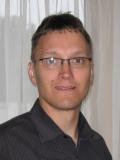Dezso Varga

Dezso Varga
Dezso Varga completed his PhD in 2003 at the Eötvös University in Budapest. As a CERN Fellow between 2004 and 2006, he worked on hadronic interactions, such as protons colliding with nuclei at multi-GeV energies at the CERN experiment NA49. Starting from 2009, he has established the Detector Physics group at the Wigner Research Centre for Physics, focusing on CERN and application related particle detector instrumentation.
- I am specifically involved in Task 4.2, the Intensity Frontier. Francesco Piscitelli at ESS leads this task, and along with Richard Hall-Wilton, they contacted the Wigner Research Centre for Physics - Budapest Neutron Center (BNC) to be part of the execution of the task. At the Wigner RCP, our expertise is particle physics, so in this sense, we provide complementary expertise at a partner in this task.
Within Task 4.2, there are several objectives. The contribution from the Wigner RCP is related to the readout system of the detector, where we do simulations and participate in beam testing, with a specific focus towards reaching the highest possible intensity. The detector we are working with is called the Multi-Blade detector and part of the task includes searching for alternatives to this detector.
When I joined BrightnESS, the neutron community was new for me and I was particularly impressed by the openness within the community. There are many opportunities for discussing the tasks and and looking for the best options, which creates a good atmosphere. As an outsider, with my base in particle physics, the scientific subject is very exciting for me to learn more about. I bring in a lot, but I am learning even more. In that sense, the project creates some very nice synergies, for example in the way we work with instrumentation.
Our main challenge in Task 4.2 is to construct a detector that can run at the highest intensity that ever existed. The readout system will need to be capable of handling this and we need sophisticated software that can deal with the high output in order to get the data and be able to ‘map’ the neutrons.
I think that BrightnESS is a great initiative that has come at the right time, at the right place. The project enables the ESS to be up and running and to supplement the instrumentation development, by looking into large challenges such as the Helium-3 crisis and specific challenges, such as intensity and readout. In this sense, ESS gets a lot of input, to supplement their own scientists’ work.

 is funded by the European Union Framework Programme for Research and Innovation Horizon 2020, under grant agreement 676548.
is funded by the European Union Framework Programme for Research and Innovation Horizon 2020, under grant agreement 676548.